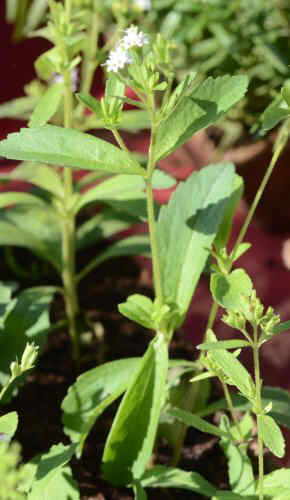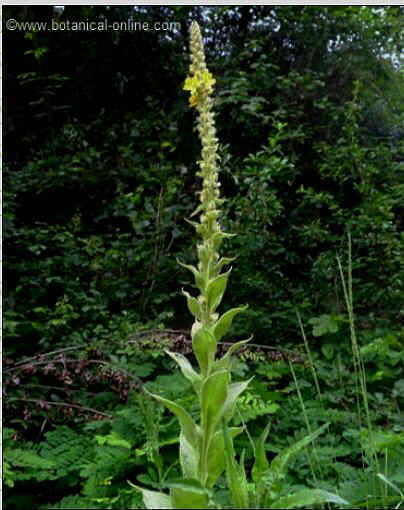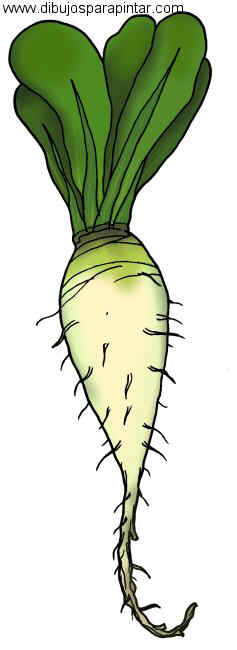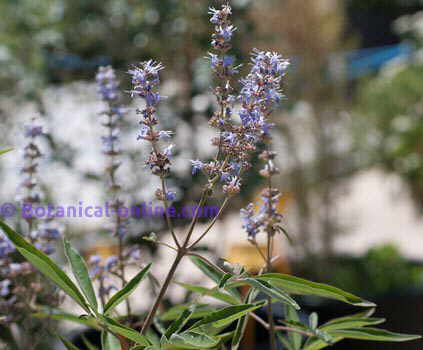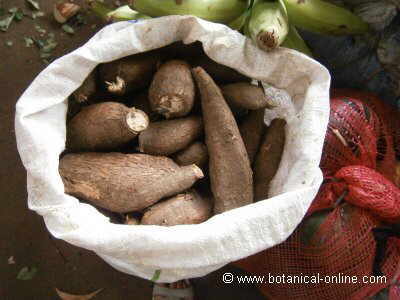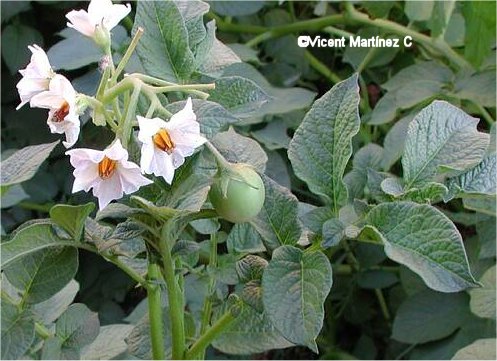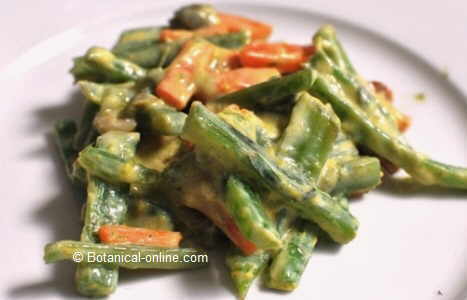Contents
What are papayas?
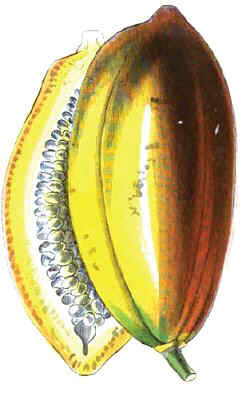
Drawing of a papaya
A papaya is the fruit of the papaya tree (Carica papaya).
It has a shape similar to a large pear, but with a thicker skin. The color of the skin indicates its state of maturation, varying from light green to orange with yellow tones, as the fruit ripens.
If we peel a papaya, inside, it contains an edible pulp of an intense orange color and buttery texture.
In the center of the fruit has a space filled with round seeds of black color and viscous texture.
What do papayas contain? Composition of papayas
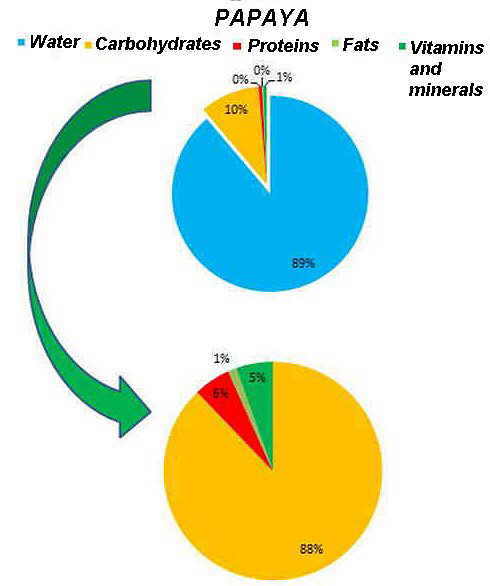
Main components of papaya
As an energy source, 100 grams of papaya provide us with 39 kilocalories.
Its proportion of nutrients is divided into:
- More than 88% is water.
- 0.14%, fat.
- Close to 0.6%, protein.
- It does not reach 10% of carbohydrates.
- 1.8%, fiber.
Minerals of papayas
At the mineral level, potassium and calcium are very rich in fruit, but it also contains magnesium, phosphorus, sodium, iron, zinc, selenium, manganese and copper.
Vitamins of papayas
At the level of vitamins, it is a fruit rich in vitamin A, vitamin C and vitamin B9. It also contains small amounts of vitamin E and other B vitamins.
Benefits of papayas
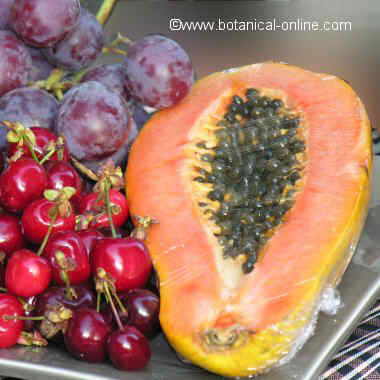
Photo of cut papaya showing seeds and pulp
- It has a high content of water that prevents us from dehydrating.
- It gives us a moderate energy content to have vitality during the day.
- It is a very poor source of fat and protein.
- It has a moderate content of carbohydrates, specifically in sugars.
- It has a low fiber content.
- It helps us eliminate toxins from our body, because of its potassium content.
- Calcium together with phosphorus, maintains the balance of the formation of strong bones.
- For its content in vitamin B9 it helps to grow properly.
- It protects our skin and helps keep it healthy, due to its vitamin A content.
- It protects us from colds and helps to heal wounds, due to its vitamin C content.
- It protects us from toxic substances and aging, due to its vitamin A, C and E content and the minerals selenium and zinc.
Papaya recipes
![]() More information on papaya.
More information on papaya.

